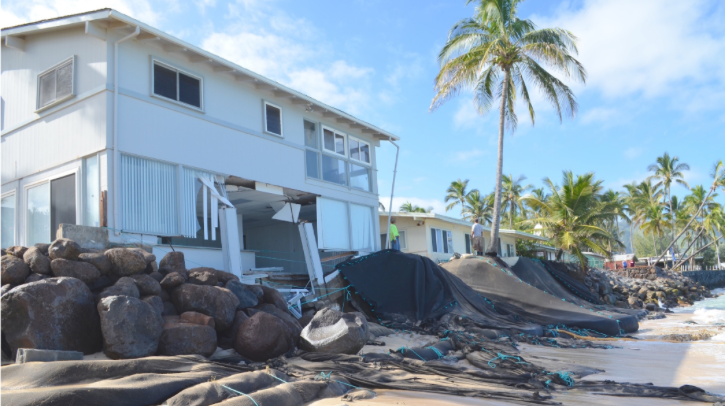A round of federal funding cuts has included the termination of a US$3m grant from the Office of Naval Research to the University of Hawaii at Mānoa. The grant, awarded to Chip Fletcher, interim dean of the School of Ocean and Earth Science and Technology (SOEST), supported the Coastal Research Collaborative (CRC), which provided data and high-resolution modeling of the impacts of sea-level rise, heat exposure and precipitation extremes – tools that inform decisions made by state and county agencies, urban planners, infrastructure designers and emergency managers.
Reduced coastal monitoring
CRC employed 15 people, including graduate students, climate researchers, policy experts and geospatial analysts. To prepare for and adapt to the growing threats related to climate change in Hawaii and the Pacific region, this team gathered data and developed new modeling tools that reduce vulnerabilities in the community and infrastructure on the island of Oahu.
Specifically, the CRC team has been modeling the impacts of sea-level rise, including flooding, coastal erosion, drainage failure, wave impacts at higher sea level and groundwater pollution with higher sea level.
“The loss of federal funding for Hawaii’s climate and sea-level rise research will have devastating consequences for the state’s ability to plan, adapt and protect its people and resources,” said Fletcher. “The models we develop and their supporting databases underpin key pieces of Hawaii’s climate legislation and coastal permitting regulations, including assessments of flood risk, groundwater inundation, coastal erosion, coastal construction setbacks and public safety. Without sustained federal investment, Hawaii will lose its capacity to provide accurate climate projections tailored to island topography, severely hampering our preparedness for compound hazards such as king tides, rain-at-high-tide flooding and storm-driven flooding.”
Data guides land management policies
Various state laws and policies rely on CRC data and models, including construction setbacks on Maui, Kauai and Honolulu; mandatory disclosure of sea-level rise impacts in real estate transactions; Special Management Area designations on Maui and Oahu; Kauai County sea-level rise constraint district; and the required analysis of sea-level rise impacts in the state Environmental Policy Act, including environmental impact statements and environmental assessment permits.
“The loss of these data systems will undermine the scientific foundation of climate resilience policies, stall progress on community adaptation and increase the vulnerability of coastal populations, public infrastructure and cultural heritage,” Fletcher emphasized. “Maintaining federal support is not just about sustaining science – it is about safeguarding Hawaii’s future.”



